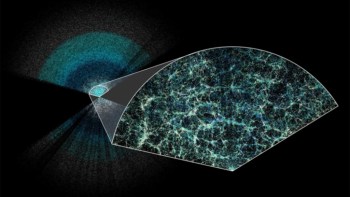Robert Aymar, the director general of CERN, has dispelled rumours that a series of buckled electrical connectors at the Large Hadron Collider will delay the accelerator’s official start-up date of May 2008. Writing in this week's CERN Bulletin, Aymar says that the problem concerns only a small percentage of the connectors and that it is “business as usual” for bringing the new accelerator online.

The Large Hadron Collider (LHC) is a 27-km ring around which beams of protons are accelerated using hundreds of superconducting magnets, grouped into eight sectors and cooled with liquid helium. To prevent the intensity of the beam dropping, the beam has to induce a “mirror” current with little resistance in the walls, an ability that requires electrical continuity throughout. But because the sectors shrink by about 10 metres in total when cooled down to their 1.9 K operating temperature, the connections between components in the sectors must be provided by collections of sliding copper fingers or “plug in modules” (PIMs).
In the first week of August, however, PIMs in “sector 7-8” of the LHC did not expand properly when the sector was warmed up from the operating temperature — a procedure occasionally necessary in the long-term running of the accelerator. This caused the PIMs to buckle into the space reserved for the beam.
To see the extent of the problem, CERN technicians quickly devised tiny radio transmitters housed in shells that could be sent down the vacuum pipes containing the PIMs. If these transmitters, which were slightly smaller than ping-pong balls, encountered an obstruction, then they would fail to pass a signal to one of the beam position monitors located every 50 m in the pipes.
The rumours — which spread largely on internet blogs — started after LHC project leader Lyn Evans gave a colloquium on 13 September to CERN staff in which he reviewed the PIM problem and proposed the technicians’ solution to it. Various blogs claimed that the LHC could be substantially delayed and that the first data runs could be pushed into 2009.
But according to Aymar’s statement, which appeared on Monday, the problem is just one of many to be expected in the run up to launch. “So far there have been no show stoppers,” Aymar says. “We can all look forward to the LHC producing its first physics in 2008.”
Speaking to physicsworld.com, Evans says that the obstruction detection technique showed that only six out of 450 PIMs in sector 7-8 were damaged, and they are currently being fixed. “If all the PIMs were affected it would have been a serious problem,” he said. “Now that we know it’s only a small number, we’re all much more relaxed.”
Evans also said that another rumour, which suggested the LHC was having problems sourcing enough helium-4 for cooling, was completely unfounded. He explained that the LHC has two contracted parties to supply the helium, but that it also has another two in reserve in case there are any problems.



